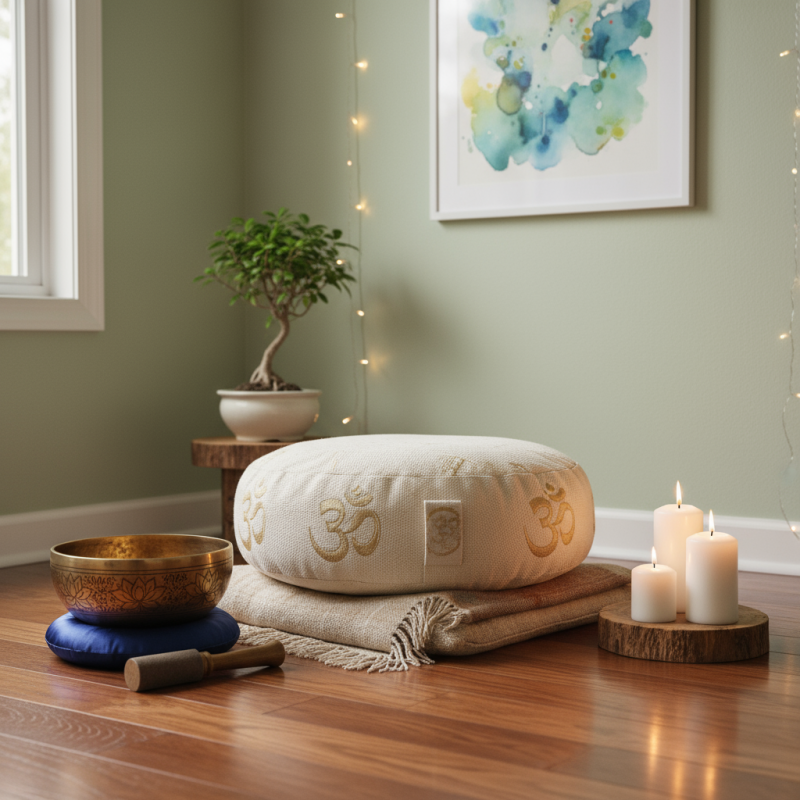Uncategorized
The Science Behind Singing Bowl Meditation: Benefits Backed by Research
In our increasingly fast-paced world, more people are turning to ancient wellness practices to find balance and peace. Among these time-honored traditions, singing bowl meditation has emerged as a powerful tool for stress relief, mental clarity, and overall well-being. But what does science say about these beautiful, resonant instruments from the Himalayas?
Recent research has begun to validate what practitioners have known for centuries: singing bowl meditation offers measurable benefits for both mind and body. Whether you’re a wellness enthusiast, meditation practitioner, or simply curious about alternative healing methods, understanding the science behind singing bowls can help you harness their full potential.
In this comprehensive guide, we’ll explore the research-backed benefits of singing bowl meditation, how sound healing works on a physiological level, and how you can incorporate this ancient practice into your modern wellness routine.
What Are Tibetan Singing Bowls?
Tibetan singing bowls, also known as Himalayan bowls, are traditional instruments that have been used for centuries in meditation, healing, and spiritual practices throughout the Himalayan region. These handcrafted bowls are typically made from a blend of metals, including copper, tin, zinc, iron, silver, gold, and nickel, each contributing to their unique sonic properties.
When played correctly—either by striking the rim with a mallet or by circling the mallet around the bowl’s edge—these instruments produce rich, harmonic tones and vibrations that can be both heard and felt throughout the body. The sound begins as a clear note but quickly develops into a complex symphony of overtones that seem to wash over the listener in waves.

The Ancient Roots of Sound Healing
The use of sound for healing dates back thousands of years across multiple cultures. Tibetan Buddhist monks have traditionally used singing bowls in meditation practices to aid concentration, induce trance states, and mark the beginning and end of meditation sessions. The bowls were believed to align chakras, clear negative energy, and promote spiritual awakening.
What makes singing bowls particularly fascinating is that they produce not just audible sound waves, but also physical vibrations that can be felt when the bowl is held or placed on the body. This dual nature—both acoustic and tactile—is central to understanding their therapeutic effects.
The Science: Research-Backed Benefits of Singing Bowl Meditation
Modern science is now catching up with ancient wisdom, and researchers are discovering measurable benefits of singing bowl meditation. Let’s explore what the evidence reveals.
Key Benefits at a Glance
| Benefit | Research Finding |
|---|---|
| Stress & Anxiety Reduction | Significant decreases in tension, anger, and anxiety even for first-time practitioners |
| Enhanced Sleep Quality | Brain wave transition to alpha and theta states promotes deeper, restorative sleep |
| Pain Management | Participants report reduced physical pain through vibration and endorphin release |
| Improved Mental Clarity | Enhanced focus, concentration, and executive function through regular practice |
| Cardiovascular Health | Decreased heart rate and blood pressure via relaxation response activation |
| Spiritual Well-Being | Increased sense of meaning, purpose, and connection reported by practitioners |
1. Significant Reduction in Stress and Anxiety
One of the most well-documented benefits of singing bowl meditation is its ability to reduce stress and anxiety levels. A landmark 2016 study published in the American Journal of Health Promotion examined the effects of singing bowl meditation on mood, anxiety, pain, and spiritual well-being. The research involved 62 participants who were new to singing bowl meditation.
The results were remarkable. Participants experienced significant decreases in tension, anger, confusion, and anxiety following just one session of singing bowl meditation. The study found that participants reported feeling more relaxed, with many describing a sense of calm that persisted after the session ended.
What makes these findings particularly compelling is that the benefits were observed in meditation novices, suggesting that you don’t need years of practice to experience positive effects. The immediate stress-reducing properties make singing bowl meditation an accessible tool for anyone seeking relief from daily pressures.
2. Enhanced Sleep Quality and Deeper Relaxation
Sleep disturbances affect millions of people worldwide, and singing bowl meditation has shown promise as a natural sleep aid. The deep relaxation induced by the bowls’ harmonic tones helps quiet the mind’s constant chatter, one of the primary obstacles to restful sleep.
Research indicates that the low-frequency sounds produced by singing bowls can help slow brain wave activity, transitioning the mind from the active beta state associated with waking consciousness to the slower alpha and theta states associated with deep relaxation and meditation. This shift in brain wave patterns can make it easier to fall asleep and achieve more restorative rest.
Many practitioners incorporate singing bowl meditation into their evening routines, using the calming sounds to signal to their nervous system that it’s time to wind down. The practice helps establish healthy sleep hygiene by creating a consistent pre-sleep ritual that the body learns to associate with rest.

3. Pain Management and Physical Healing
Perhaps one of the most intriguing areas of research involves the use of singing bowls for pain management. Studies have found that participants report reduced physical pain following singing bowl meditation sessions. While the exact mechanisms are still being studied, researchers believe several factors contribute to this effect.
The vibrations produced by singing bowls may help stimulate circulation and release muscle tension. When bowls are placed directly on or near the body, the physical vibrations can penetrate deep into tissues, potentially promoting relaxation at a muscular level. This is similar to the effects of massage therapy but achieved through sound waves rather than physical manipulation.
Additionally, the meditative state induced by the bowls may increase the production of endorphins, the body’s natural pain-relieving chemicals. The combination of physical vibration, relaxation response, and altered brain chemistry creates a multi-faceted approach to pain relief that doesn’t rely on pharmaceuticals.
4. Improved Mental Clarity and Focus
In our age of constant digital distraction, the ability to focus has become increasingly valuable. Singing bowl meditation offers a unique way to train attention and enhance mental clarity. The sustained, evolving tones of the bowls provide an anchor point for attention, similar to the breath in traditional meditation practices but with an added dimension of sensory richness.
Research on meditation generally shows that regular practice strengthens areas of the brain associated with attention, concentration, and executive function. The engaging nature of singing bowl meditation may make it easier for beginners to maintain focus compared to silent meditation, potentially leading to more consistent practice and greater long-term benefits.
Many practitioners report experiencing enhanced creativity and problem-solving abilities after singing bowl sessions. This may be due to the practice’s ability to quiet the analytical left brain and activate the more intuitive, holistic right brain, allowing for new perspectives and insights to emerge.
5. Blood Pressure Regulation and Cardiovascular Health
Chronic stress is a major contributor to cardiovascular disease, and any practice that effectively reduces stress can have positive effects on heart health. While research specifically on singing bowls and cardiovascular health is still emerging, studies on meditation broadly have shown consistent benefits for blood pressure regulation.
The deep relaxation response triggered by singing bowl meditation activates the parasympathetic nervous system, which is responsible for the body’s “rest and digest” functions. This activation leads to decreased heart rate, lowered blood pressure, and reduced levels of stress hormones like cortisol. Over time, regular practice may contribute to better cardiovascular health and reduced risk of stress-related conditions.
6. Enhanced Spiritual Well-Being and Connection
Beyond the measurable physical and psychological benefits, many practitioners report profound effects on their sense of spiritual well-being. The same 2016 study mentioned earlier found significant increases in spiritual well-being among participants following singing bowl meditation.
This enhanced spiritual connection doesn’t necessarily refer to religious experience, but rather to a sense of meaning, purpose, and connection to something greater than oneself. Many describe feelings of unity, transcendence, and deep peace during singing bowl sessions. These experiences can be particularly valuable for those dealing with existential concerns or seeking greater meaning in their lives.
How Sound Healing Works: The Mechanism Behind the Magic
Understanding why singing bowls are so effective requires exploring the science of sound and its effects on the human body and mind.

🧠 Understanding Brainwave States
Our brains produce electrical activity that can be measured as brainwaves, which vary in frequency depending on our state of consciousness:
Beta Waves (14-30 Hz)
- State: Active, alert thinking and concentration
- Daily activities: Working, problem-solving, decision-making
- Characteristics: High alertness, sometimes stress and anxiety
Alpha Waves (8-13 Hz)
- State: Relaxed awareness, light meditation
- Daily activities: Daydreaming, creative flow, mindfulness
- Characteristics: Calm yet alert, reduced stress
Theta Waves (4-7 Hz)
- State: Deep meditation, creativity, light sleep
- Daily activities: Deep relaxation, visualization, REM sleep
- Characteristics: Profound peace, enhanced intuition
Delta Waves (0.5-3 Hz)
- State: Deep sleep, healing, regeneration
- Daily activities: Dreamless sleep, physical restoration
- Characteristics: Complete unconsciousness, body repair
How Singing Bowls Help: The sustained tones of singing bowls can help guide the brain from active beta states into the slower, more relaxed alpha and theta states through a process called brainwave entrainment.
Frequency, Vibration, and Resonance
Everything in the universe vibrates at specific frequencies, including our bodies. Different organs, tissues, and even emotional states are associated with particular vibrational frequencies. When we’re stressed, in pain, or emotionally unbalanced, these natural frequencies can become disrupted.
Singing bowls produce complex sound waves that include a fundamental tone along with numerous harmonic overtones. These overtones create a rich acoustic environment that some researchers believe can help “entrain” or synchronize the body’s own vibrations, bringing them back into a healthy, balanced state. This principle is known as sympathetic resonance.
When you’re in the presence of singing bowl sounds, your body essentially “tunes” itself to these harmonious frequencies, much like tuning forks will begin to vibrate in sync when placed near each other. This entrainment effect may explain why singing bowl meditation feels so profoundly relaxing and balancing.
Activation of the Relaxation Response
Dr. Herbert Benson, a pioneer in mind-body medicine, identified what he termed the “relaxation response”—a physiological state characterized by decreased metabolism, heart rate, blood pressure, and breathing rate. This state is the opposite of the stress-induced “fight or flight” response that so many of us experience chronically in modern life.
Singing bowl meditation is particularly effective at triggering this relaxation response. The immersive sound environment, combined with focused attention and deep breathing, sends clear signals to the nervous system that it’s safe to relax. The parasympathetic nervous system becomes dominant, allowing the body to shift its resources away from stress response and toward healing, digestion, and restoration.
Physical Vibration and the Body
When singing bowls are played, they don’t just produce sound waves that travel through the air—they also create physical vibrations. Since the human body is composed of approximately 60% water, and water is an excellent conductor of sound, these vibrations can travel throughout the body.
Some practitioners place bowls directly on the body or nearby, allowing the vibrations to be felt as a subtle massage at the cellular level. This physical component adds another dimension to the healing experience, potentially affecting tissues, organs, and even the flow of energy in the body in ways that pure sound cannot.
Getting Started with Singing Bowl Meditation
Now that you understand the science behind singing bowls, you may be wondering how to incorporate this practice into your own life.

Choosing Your First Singing Bowl
Selecting a singing bowl is a personal experience. Each bowl has its own unique tone and vibration, and the right bowl for you is one that resonates with you—both literally and figuratively. Here are some factors to consider:
Size and Tone Larger bowls generally produce deeper, lower tones, while smaller bowls create higher-pitched sounds. Consider what feels most calming or energizing to you. Many practitioners find that lower tones are more grounding and relaxing, while higher tones can be more uplifting and energizing.
Material and Craftsmanship Authentic Himalayan singing bowls are traditionally hand-hammered from multiple metals, each contributing to the bowl’s unique sound profile. Look for bowls with good craftsmanship that show the marks of hand work rather than machine production. The quality of materials and construction directly affects both the sound quality and durability of the bowl.
Authenticity Matters Mass-produced bowls often lack the complex harmonic overtones and rich sound of authentic, handcrafted bowls. Investing in an authentic piece not only ensures a better meditation experience but also supports traditional artisans and fair trade practices.
💡 Pro Tip: At Khusi Inc., we offer a curated selection of authentic, handcrafted Nepali singing bowls, each one individually made by skilled artisans in the Himalayas using traditional techniques passed down through generations. Explore our singing bowl collection →
Basic Technique for Beginners: 7 Simple Steps
Step 1: Find a Quiet Space Choose a peaceful environment where you won’t be disturbed. Dim the lights if possible to create a calming atmosphere.
Step 2: Get Comfortable Sit in a comfortable position with the bowl resting on your palm or on a cushion. The bowl should be stable and level.
Step 3: Set an Intention Take a moment to set an intention for your practice, whether it’s relaxation, healing, clarity, or simply being present.
Step 4: Begin with Striking Gently strike the rim of the bowl with the mallet to create a clear tone. Listen as the sound builds and fades. Focus your full attention on the sound and vibration.
Step 5: Try Singing Once you’re comfortable with striking, try the “singing” technique. Hold the mallet like a pen and circle it around the outside rim of the bowl with steady, even pressure. As you maintain consistent contact and speed, the bowl will begin to “sing,” producing a continuous tone.
Step 6: Breathe and Listen Continue the sound for as long as feels comfortable, breathing deeply and allowing the vibrations to wash over you. If your mind wanders, gently bring your attention back to the sound.
Step 7: Close Mindfully When you’re ready to finish, let the sound fade naturally. Sit in silence for a few moments, noticing how you feel.
Duration: Start with just 5-10 minutes and gradually extend your practice as it becomes more comfortable. Consistency is more important than duration—even a brief daily practice can yield significant benefits over time.
Creating a Supportive Practice Environment
To maximize the benefits of your singing bowl meditation, consider creating a dedicated space in your home. This doesn’t need to be elaborate—a quiet corner with a comfortable cushion, perhaps some candles or meaningful objects, can serve as a powerful anchor for your practice.
The ritual of going to this space and beginning your practice signals to your mind and body that it’s time to shift gears, making it easier to enter a meditative state. Over time, this space becomes imbued with the peace and calm of your practice, making it even more effective as a sanctuary from daily stress.
Elements to Include in Your Meditation Space:
- Comfortable cushion or meditation chair
- Your singing bowl and mallet
- Soft lighting (candles or salt lamps)
- Natural elements (plants, stones, water features)
- Minimal distractions (turn off devices)
- Personal meaningful objects
- Pleasant aromatherapy (incense, essential oils)
Conclusion: Ancient Wisdom Meets Modern Science
The growing body of scientific research on singing bowl meditation confirms what Himalayan practitioners have known for centuries: these remarkable instruments offer profound benefits for physical, mental, and spiritual well-being. From reducing stress and anxiety to improving sleep, managing pain, and enhancing focus, singing bowls provide a multi-faceted approach to wellness that addresses the whole person.
What makes singing bowl meditation particularly appealing in our modern context is its accessibility. Unlike some meditation practices that require years of training to master, the effects of singing bowl meditation can be experienced immediately, even by complete beginners. The engaging, sensory nature of the practice makes it easier to maintain focus, potentially leading to more consistent practice and greater long-term benefits.
As we continue to navigate the challenges of contemporary life—information overload, chronic stress, disconnection from nature and community—ancient practices like singing bowl meditation offer a bridge back to balance and wholeness. They remind us that sometimes the most effective solutions to modern problems are those that have been tested and refined over thousands of years of human experience.
Ready to Begin Your Journey?
If you’re ready to experience the transformative power of singing bowl meditation for yourself, we invite you to explore our collection of authentic, handcrafted Himalayan singing bowls at Khusi Inc. Each bowl in our collection is made by skilled artisans using traditional methods, ensuring not only exceptional sound quality but also supporting fair trade practices and preserving cultural heritage.
Discover Your Perfect Singing Bowl →
Whether you’re beginning your meditation journey or deepening an existing practice, a quality singing bowl can become a treasured companion on your path to greater peace, clarity, and well-being. The science is clear: singing bowl meditation works. Now it’s your turn to experience it for yourself.
Frequently Asked Questions
Q: How long should I meditate with a singing bowl? A: Begin with 5-10 minutes daily and gradually increase as you become more comfortable. Even short sessions can be beneficial when practiced consistently. Many practitioners find that 15-20 minutes is ideal once they’ve established a regular practice.
Q: Can singing bowl meditation replace traditional meditation? A: Singing bowl meditation can complement or be an alternative to traditional silent meditation. Some people find it easier to maintain focus with the auditory anchor, while others use both practices. There’s no “better” form—choose what resonates with you and supports your wellness goals.
Q: Are there any side effects or contraindications? A: Singing bowl meditation is generally safe for most people. However, those with sound sensitivities, epilepsy triggered by auditory stimuli, or certain medical conditions should consult a healthcare provider first. Pregnant women should avoid placing bowls directly on the abdomen. If you have a pacemaker or other implanted medical device, consult your doctor before use.
Q: How do I know if my singing bowl is authentic? A: Authentic Himalayan singing bowls are hand-hammered, showing slight irregularities in shape and finish. They produce rich, complex harmonic overtones that continue to develop after the initial strike and can sustain for 30+ seconds. Machine-made bowls tend to have a simpler, shorter-lived sound and appear perfectly uniform. Look for visible hammer marks and variations in thickness.
Q: Can I use singing bowls with other healing practices? A: Absolutely! Singing bowls complement many wellness practices including yoga, reiki, massage therapy, traditional meditation, breathwork, and energy healing. Many practitioners integrate them into comprehensive healing sessions. The versatility of singing bowls makes them an excellent addition to any wellness toolkit.
Q: Do I need different bowls for different purposes? A: While one quality bowl is sufficient to start, many practitioners eventually collect multiple bowls with different tones and sizes for various purposes. Lower-toned larger bowls are often used for grounding and root chakra work, while higher-toned smaller bowls are used for clarity and upper chakra activation. Start with one that speaks to you, and expand your collection as your practice develops.
Q: How do I care for my singing bowl? A: Clean your bowl gently with a soft, dry cloth after each use. For deeper cleaning, use mild soap and water, then dry thoroughly. Avoid harsh chemicals or abrasive materials. Store in a safe place where it won’t be knocked or scratched. Keep the mallet separate to prevent dings. With proper care, your singing bowl can last for generations.





















